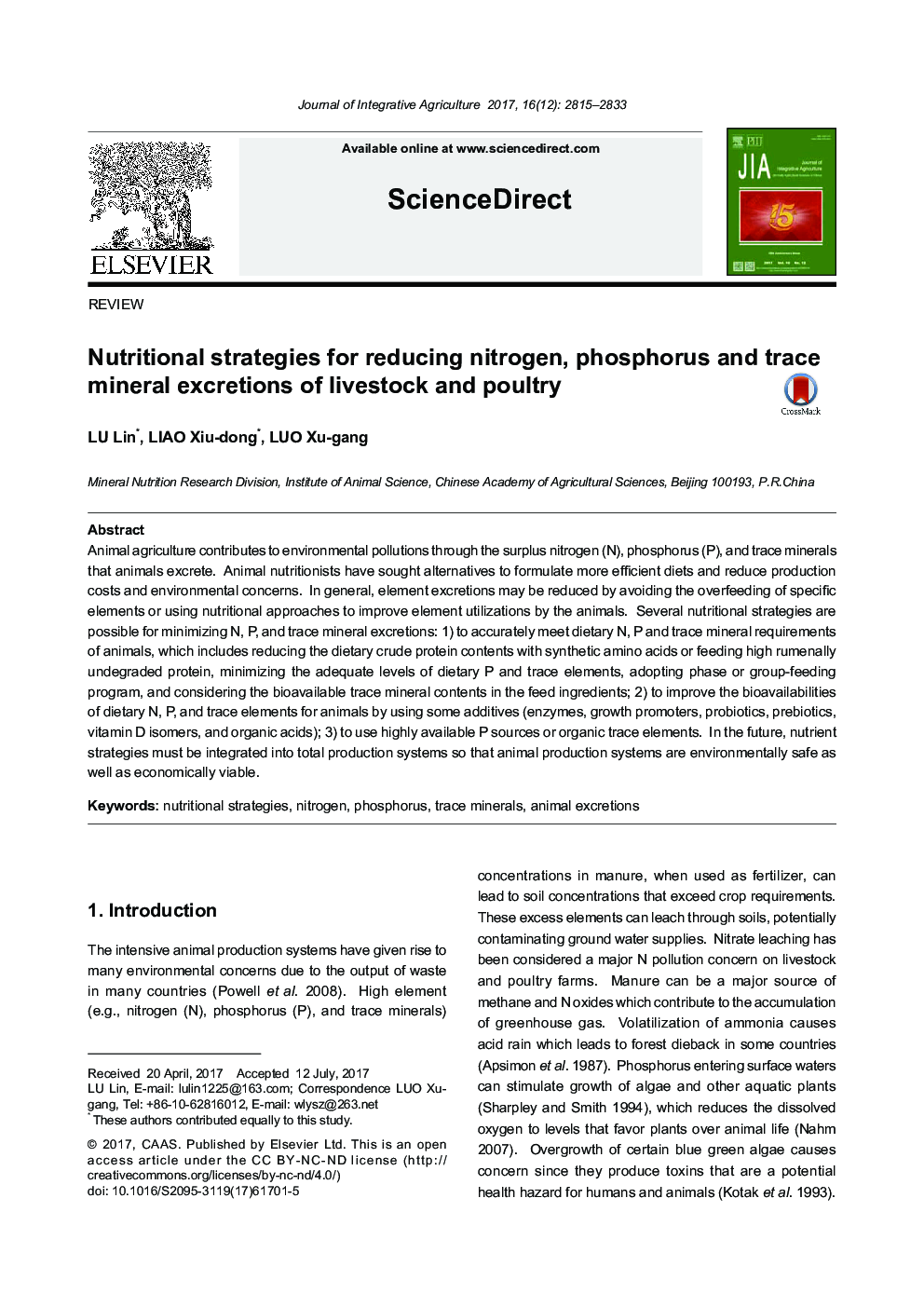| Article ID | Journal | Published Year | Pages | File Type |
|---|---|---|---|---|
| 8875783 | Journal of Integrative Agriculture | 2017 | 19 Pages |
Abstract
Animal agriculture contributes to environmental pollutions through the surplus nitrogen (N), phosphorus (P), and trace minerals that animals excrete. Animal nutritionists have sought alternatives to formulate more efficient diets and reduce production costs and environmental concerns. In general, element excretions may be reduced by avoiding the overfeeding of specific elements or using nutritional approaches to improve element utilizations by the animals. Several nutritional strategies are possible for minimizing N, P, and trace mineral excretions: 1) to accurately meet dietary N, P and trace mineral requirements of animals, which includes reducing the dietary crude protein contents with synthetic amino acids or feeding high rumenally undegraded protein, minimizing the adequate levels of dietary P and trace elements, adopting phase or group-feeding program, and considering the bioavailable trace mineral contents in the feed ingredients; 2) to improve the bioavailabilities of dietary N, P, and trace elements for animals by using some additives (enzymes, growth promoters, probiotics, prebiotics, vitamin D isomers, and organic acids); 3) to use highly available P sources or organic trace elements. In the future, nutrient strategies must be integrated into total production systems so that animal production systems are environmentally safe as well as economically viable.
Keywords
Related Topics
Life Sciences
Agricultural and Biological Sciences
Agricultural and Biological Sciences (General)
Authors
Lin LU, Xiu-dong LIAO, Xu-gang LUO,
